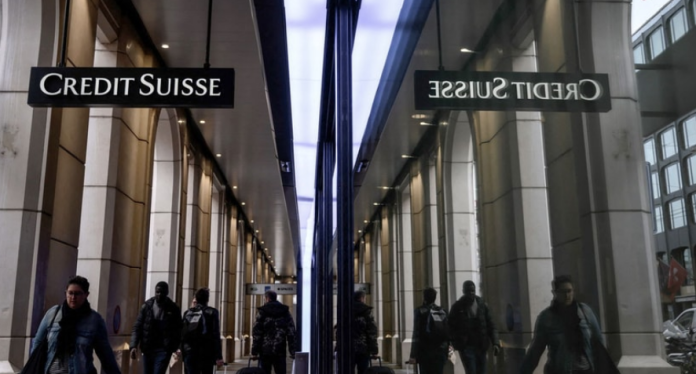As interest rates rise and asset prices slump, investors are scrambling to identify the weakest links in the global financial system. Every bear market produces national and corporate victims who get skewered. In the 1997-98 rout Thailand’s economy imploded, as did ltcm, a hedge fund. Iceland and Lehman Brothers were victims in the 2008-09 slump.
Today one country has already been picked off: Britain, where the currency has fallen and the central bank has had to intervene in the bond market to bail out the pension system, whose overseers had foolishly made vast bets on continued low volatility. Now some believe an institutional victim of the great 2022 sell-off in markets has been spotted: Credit Suisse, a venerable Swiss firm that spans wealth-and-asset management, private banking and investment banking.
Its shares have fallen by 55% this year and its credit-default swaps, which measure default risk, have risen. These two red lights will be familiar to anyone who witnessed Wall Street firms struggling in 2008-09, as will the statements by Credit Suisse’s managers that the bank has a strong liquidity and capital position. This year’s version of a confidence scare at a bank comes with a new twist, too: a swirl of malicious, mad and made-up rumours on Twitter and elsewhere. Welcome to the too-big-to-fail problem in the social-media age.
So does the claim on the message boards that Credit Suisse is “next” make sense? At a high level the idea that a big bank, shadow bank or investment firm might be in trouble is plausible. The financial system has become habituated to 15 years of rock-bottom interest rates. The hunt for yield has led insurers and other funds to stuff portfolios with long-duration assets that are ultra-sensitive to rising rates. American banks have retreated from lending as regulations have grown tighter, and instead a system of market-based credit has emerged that deals in trillions of dollars of low-quality debt. There have been some medium-sized blowups already, including of Archegos, a hedge fund, and Greensill, a lender.
Furthermore, Credit Suisse has been poorly run and struggling for some time. It has suffered repeated risk-management and compliance scandals, including being exposed to losses from Archegos and Greensill. Its top management ranks have been a revolving door.
Yet in most other respects it does not look like the epicentre of a financial explosion in the way that, say, Lehman, or aig, an insurer, were. Instead of rampant growth fuelled by hubris, Credit Suisse’s balance sheet has shrunk continuously over the past decade in dollar terms, as it has downsized itself into the second tier of global finance. Today it is the 54th biggest listed financial firm in the world by assets.
Its problems are idiosyncratic and, to a degree, an expression of management caution rather than recklessness. It owns a sub-par investment banking unit that needs to be shrunk or shut down. Based on the second-quarter results this division eats up 30% of its risk-adjusted assets and has annualised costs of SFr8bn ($8bn). It is largely to blame for the firm’s overall quarterly pre-tax loss of SFr1.17bn and awful return on equity of minus 14%.
Bitter experience from firms such as Deutsche Bank and Royal Bank of Scotland teaches that shrinking an investment bank is a bit like decommissioning a nuclear reactor: dangerous and expensive. Star bankers leave and business dries up faster than you can cut costs and quit long-term contracts, leading to losses. Investors’ main concern has been that these potential losses might be so big that Credit Suisse would have to raise equity to ensure it had enough capital to support its ongoing businesses, which are fairly healthy.
Worries about financial firms can be self-fulfilling, as counterparties charge a higher risk-premium to lend to or deal with the firm, making it uncompetitive. In order to bring down its borrowing costs Credit Suisse will have to convince investors that it has a better proposal for shrinking its investment bank without incurring massive upfront losses. It plans to announce this on October 27th.
But so far, at least, Credit Suisse is not an example of a business model which, in its spectacular excesses and implosion, encapsulates a broader madness in the markets. Instead it is an example of a relatively weak firm coming under pressure as financial conditions tighten and the economy flags. There will be many more of these, in many other industries. Meanwhile the hunt in the markets for “the big one” will go on.

